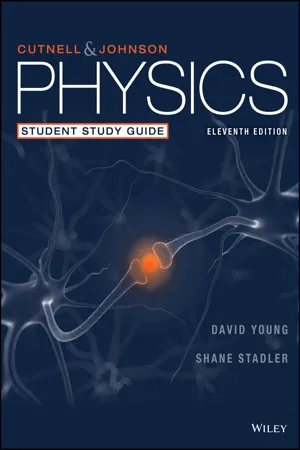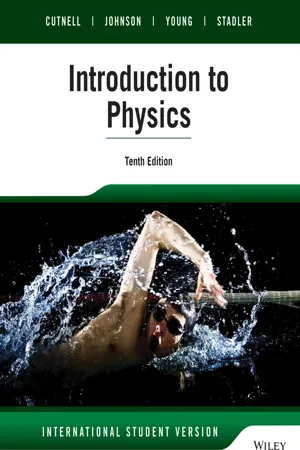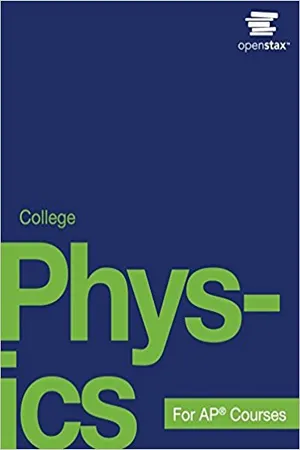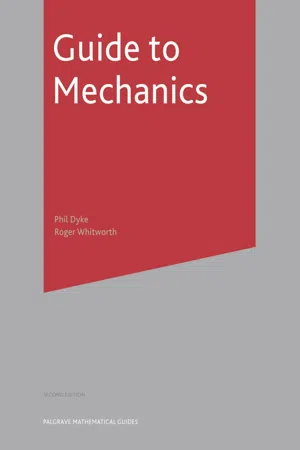Physics
Force and Torque
Force is a push or pull acting on an object, causing it to accelerate or deform. It is a vector quantity, meaning it has both magnitude and direction. Torque, on the other hand, is the rotational equivalent of force, causing an object to rotate around an axis. It is also a vector quantity and is the product of force and the distance from the axis of rotation.
Written by Perlego with AI-assistance
Related key terms
1 of 5
8 Key excerpts on "Force and Torque"
- eBook - ePub
Introduction to Sports Biomechanics
Analysing Human Movement Patterns
- Roger Bartlett(Author)
- 2007(Publication Date)
- Routledge(Publisher)
Figure 5.1 .The effects of a force are not altered by moving it along its line of action. Its effects on rotation – though not on linear motion – are changed if the force is moved parallel to the original direction and away from its line of action. A torque, also known as aFigure 5.1 Directional quality of force.moment of force or a turning effect, is then introduced; this is an effect tending to rotate the object (see below). A quantitative analyst should exercise care when solving systems of forces graphically and would usually adopt a vector approach (see Appendix 4.1 ).The SI unit of force is the newton (N) and the symbol for a force vector is F . One newton is the force that when applied to a mass of one kilogram (1 kg), causes that mass to accelerate at 1 m/s2 in the direction of the force application. A sports performer experiences forces both internal to and external to the body. Internal forces are generated by the muscles and transmitted by tendons, bones, ligaments and cartilage; these will be considered in Chapter 6 . The main external forces, the combined effect of which determines the overall motion of the body, are as follows.Weight
Weight is a familiar force (Figure 5.1 ) attributable to the gravitational pull of the Earth. It acts vertically downwards through the centre of gravity of an object towards the centre of the Earth. The centre of gravity (G in Figure 5.1 ) is an imaginary point at which the weight of an object can be considered to act. For the human performer, there is little difference between the positions of the centre of mass (see later) and the centre of gravity. The former is the term preferred in most modern sports biomechanics literature and will be used in the rest of this book. One reason for this preference is that the centre of gravity is a meaningless concept in weightless environments, such as space shuttles. An athlete with a mass of 50 kg has a weight (G ) of about 490 N at sea level, at which the standard value of gravitational acceleration, g , is assumed to be 9.81 m/s2 - eBook - PDF
- John D. Cutnell, Kenneth W. Johnson, David Young, Shane Stadler(Authors)
- 2015(Publication Date)
- Wiley(Publisher)
The large counterweight on the right side (short end) of this tall tower crane ensures its boom remains balanced on its mast while lifting heavy loads. It is not equal weights on both sides of the tower that keep it in equilibrium, but equal torques. Torque is the rotational analog of force, and is an important topic of this chapter. 9 | Rotational Dynamics Chapter | 9 LEARNING OBJECTIVES After reading this module, you should be able to... 9.1 | Distinguish between torque and force. 9.2 | Analyze rigid objects in equilibrium. 9.3 | Determine the center of gravity of rigid objects. 9.4 | Analyze rotational dynamics using moments of inertia. 9.5 | Apply the relation between rotational work and energy. 9.6 | Solve problems using the conservation of angular momentum. 9.1 | The Action of Forces and Torques on Rigid Objects The mass of most rigid objects, such as a propeller or a wheel, is spread out and not con- centrated at a single point. These objects can move in a number of ways. Figure 9.1a il- lustrates one possibility called translational motion, in which all points on the body travel on parallel paths (not necessarily straight lines). In pure translation there is no rotation of any line in the body. Because translational motion can occur along a curved line, it is often called curvilinear motion or linear motion. Another possibility is rotational motion, which may occur in combination with translational motion, as is the case for the somersaulting gymnast in Figure 9.1b. We have seen many examples of how a net force affects linear motion by causing an object to accelerate. We now need to take into account the possibility that a rigid object can also have an angular acceleration. A net external force causes linear motion to change, but what causes rotational motion to change? For example, something causes the rotational velocity of a speedboat’s propeller to change when the boat accelerates. - eBook - PDF
- John D. Cutnell, Kenneth W. Johnson, David Young, Shane Stadler(Authors)
- 2018(Publication Date)
- Wiley(Publisher)
CHAPTER4 Forces and Newton's Laws of Motion PREVIEW In this chapter you will begin the study of dynamics, that branch of physics which explains why objects accelerate. You will be introduced to the concept of force, and study Newton's laws of motion, which apply to all forces that occur in nature. You will learn how to construct free-body diagrams, and use them to analyze systems subject to such forces as gravity and friction. You will also apply Newton's laws of motion to solve a number of different problems. The applications will include both equilibrium and non-equilibrium problems. QUICK REFERENCE Important Terms Force The push or pull required to change the state of motion of an object, as defined by Newton's second law. It is a vector quantity with units of newtons (N), dynes (dyn), or pounds (lb ). Inertia The natural tendency of an object to remain at rest or in uniform motion at a constant speed in a straight line. Mass A quantitative measure of inertia. Units are kilograms (kg), grams (g), or slugs (sl). Inertial Reference Frame A reference frame in which Newton's law of inertia is valid. Free-Body Diagram A vector diagram that represents all of the forces acting on an object. Gravitational Force The force of attraction that every particle of mass in the universe exerts on every other particle. Weight The gravitational force exerted by the earth (or some other large astronomical body) on an object. Normal Force One component of the force that a surface exerts on an object with which it is in contact. This component is directed normal, or perpendicular, to the surface. Friction The force that an object encounters when it moves or attempts to move along a surface. It is always directed parallel to the surface in question. Tension The tendency of a rope (or similar object) to be pulled apart due to the forces that are applied at either end. Equilibrium The state an object is in if it has zero acceleration. - eBook - PDF
- John D. Cutnell, Kenneth W. Johnson, David Young, Shane Stadler(Authors)
- 2015(Publication Date)
- Wiley(Publisher)
4.1 | The Concepts of Force and Mass In common usage, a force is a push or a pull, as the examples in Figure 4.1 illustrate. In football, an offensive lineman pushes against his opponent. The tow bar attached to a speed- ing boat pulls a water skier. Forces such as those that push against the football player or pull the skier are called contact forces, because they arise from the physical contact between two objects. There are circumstances, however, in which two objects exert forces on one another even though they are not touching. Such forces are referred to as noncontact forces or action-at-a-distance forces. One example of such a noncontact force occurs when a diver is pulled toward the earth because of the force of gravity. The earth exerts this force even when it is not in direct contact with the diver. In Figure 4.1, arrows are used to rep- resent the forces. It is appropriate to use arrows, because a force is a vector quantity and has both a magnitude and a direction. The direction of the arrow gives the direction of the force, and the length is proportional to its strength or magnitude. The word mass is just as familiar as the word force. A massive supertanker, for instance, is one that contains an enormous amount of mass. As we will see in the next section, it is difficult to set such a massive object into motion and difficult to bring it to a halt once it is moving. In comparison, a penny does not contain much mass. The emphasis here is on the amount of mass, and the idea of direction is of no concern. Therefore, mass is a scalar quantity. During the seventeenth century, Isaac Newton, building on the work of Galileo, developed three important laws that deal with force and mass. Collectively they are called “Newton’s laws of motion” and provide the basis for understanding the effect that forces have on an object. Because of the importance of these laws, a separate section will be devoted to each one. - eBook - PDF
- John D. Cutnell, Kenneth W. Johnson, David Young, Shane Stadler(Authors)
- 2018(Publication Date)
- Wiley(Publisher)
LEARNING OBJECTIVES After reading this module, you should be able to... 4.1 Discuss the concepts of force and mass. 4.2 Define Newton’s first law of motion. 4.3 Define Newton’s second law of motion. 4.4 Apply Newton’s second law of motion in two dimensions. 4.5 Apply Newton’s third law of motion. 4.6 Identify types of forces. 4.7 Define Newton’s law of universal gravitation. 4.8 Solve problems using the normal force. 4.9 Solve problems involving friction. 4.10 Solve problems involving tension. 4.11 Apply Newton’s first law to equilibrium problems. 4.12 Apply Newton’s second law to nonequilibrium problems. © Stocktrek Images CHAPTER 4 Forces and Newton’s Laws of Motion In order to successfully land the planetary rover, Curiosity, on the surface of Mars, NASA scientists and engineers had to take into account many forces, such as the thrust from the “sky crane” rocket engines, the tension in its towing cables, air resistance, and the weight of the rover due to the gravity on Mars, just to name a few. This chapter will discuss how forces influence the motion of objects. 4.1 The Concepts of Force and Mass In common usage, a force is a push or a pull, as the examples in Figure 4.1 illustrate. In football, an offensive lineman pushes against his opponent. The tow bar attached to a speeding boat pulls a water skier. Forces such as those that push against the football player or pull the skier are called contact forces, because they arise from the physical contact between two objects. There are circumstances, however, in which two objects exert forces on one another even though they are not touching. Such forces are referred to as noncontact forces or action-at-a-distance forces. One example of such a noncontact force occurs when a diver is pulled toward the earth because of the force of gravity. The earth exerts this force even when it is not in direct contact with the diver. In Figure 4.1, arrows are used to represent the forces. - eBook - PDF
- Paul Peter Urone, Roger Hinrichs(Authors)
- 2012(Publication Date)
- Openstax(Publisher)
that pushes a body forward in response to a backward force; rockets, airplanes, and cars are pushed forward by a thrust reaction force the force w due to gravity acting on an object of mass m ; defined mathematically as: w = mg , where g is the magnitude and direction of the acceleration due to gravity Section Summary 4.1 Development of Force Concept • Dynamics is the study of how forces affect the motion of objects. • Force is a push or pull that can be defined in terms of various standards, and it is a vector having both magnitude and direction. • External forces are any outside forces that act on a body. A free-body diagram is a drawing of all external forces acting on a body. 4.2 Newton’s First Law of Motion: Inertia • Newton’s first law of motion states that a body at rest remains at rest, or, if in motion, remains in motion at a constant velocity unless acted on by a net external force. This is also known as the law of inertia. • Inertia is the tendency of an object to remain at rest or remain in motion. Inertia is related to an object’s mass. • Mass is the quantity of matter in a substance. 4.3 Newton’s Second Law of Motion: Concept of a System • Acceleration, a , is defined as a change in velocity, meaning a change in its magnitude or direction, or both. • An external force is one acting on a system from outside the system, as opposed to internal forces, which act between components within the system. • Newton’s second law of motion states that the acceleration of a system is directly proportional to and in the same direction as the net external force acting on the system, and inversely proportional to its mass. • In equation form, Newton’s second law of motion is a = F net m . • This is often written in the more familiar form: F net = ma . • The weight w of an object is defined as the force of gravity acting on an object of mass m . - eBook - ePub
- Hiqmet Kamberaj(Author)
- 2021(Publication Date)
- De Gruyter(Publisher)
Newton was able to answer the question of what force causes the planets to orbit around the Sun, and related questions by stating that forces are what cause any change in the velocity of an object. Thus, no force is required for the motion with a constant velocity of an object to be maintained. For example, the Moon’s velocity is not constant because it moves in a nearly circular orbit around the Earth because of the force exerted on the Moon by the Earth. Therefore, since the velocity of objects changes whenever a force is applied to them, then the forces make the objects accelerate. Here, we are concerned with the relationship between the force exerted on an object and the acceleration of that object.Equilibrium
In the case when more than one force acts upon an object simultaneously, if the net force acting on it is different from zero, then the object accelerates. By definition, the net (or resultant) force acting on an object is given by the vector sum of all vectors of the forces acting on the object:(5.1)F R=∑ iF iwhereF Ris the net force as the over all force, the resultant force, or the unbalanced force, and the sum runs overall forcesF iacting upon the object. If the resultant force,F R, exerted on an object is zero, then its acceleration is zero, and hence the velocity of that object remains unchanged. In other words, if, then the object either remains at the state of rest or continues moving with the same velocity. If an object moves with constant velocity or it is at rest (that is, its velocity is zero), the object is said to be in equilibrium.F R= 0When a coiled spring is pulled, as in Fig. 5.1 , the spring stretches and hence changes its state of rest. That is the case of contact forces.Figure 5.1 Example of applied contact force.To overcome the conceptual problem of non-contact forces, Michael Faraday (1791–1867) introduced the concept of a field. Based on this concept, if any object is placed near another object, then the objects interact with each other through the gravitational field. In this case, we say that a gravitational field is created by each object at the position of the other object. All objects create a gravitational field in the space around themselves. Field forces are those types of forces, which do not have physical contact between two objects, but they are acting through empty space. An example of the field force is the gravitational attraction force between two objects, illustrated in Fig. 5.2 - eBook - PDF
- Philip Dyke, Roger Whitworth(Authors)
- 2017(Publication Date)
- Red Globe Press(Publisher)
CHAPTER 2 Forces 2.1 Force as a vector We now introduce the concept of force. When forces are studied alone, the study is called statics . When they are studies in conjunction with kinematics, then the area of study is called dynamics . If a body changes its velocity, we conclude that a force acts upon it. Consider the motion of parachutists falling from an airplane: 1 At first, they fall vertically downwards as a result of the force acting on them in that direction (Figure 2.1(a)). Their speed increases as they move downwards. The vertical force involved is principally the weight , which is the force of the Earth's attraction acting on the parachutist. In addition, there are resistance forces . Resistance forces will always oppose motion when they occur. 2 After the parachute opens (Figure 2.1(b)), the parachutist's speed will eventually reach a stage when it stops increasing. In this case, the velocity is no longer changing and all the forces acting on the body must cancel out. In fact, the magnitude of the resistance force is then equal to the magnitude of the weight (see Chapter 5). In the case of a body in a state of equilibrium , that is, at rest, the total force acting on the body must also be zero. Consider the following cases of a body P in equilibrium: Resistance Resistance Weight Weight (b) (a) Figure 2.1 Parachutists 27 Tension Weight (a) Reaction Reaction Weight Weight (c) Thrust Weight (b) (d) (e) Normal reaction Friction Push Normal reaction Friction Weight Weight (f) Figure 2.2 Bodies in equilibrium 1 When the body is suspended by a string to hang freely (Figure 2.2(a)), the weight is supported by an upward force in the string, the tension . 2 When the body is supported on a spring from below (Figure 2.2(b)), the weight is supported by an upward force in the spring, the thrust . 3 When the body is resting on a horizontal surface, the weight is supported by an upward force supplied by the surface, the reaction or normal reaction (Figure 2.2(c)).
Index pages curate the most relevant extracts from our library of academic textbooks. They’ve been created using an in-house natural language model (NLM), each adding context and meaning to key research topics.







